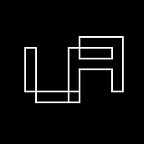A Conversation with Ruofan
Ruofan Chen (b. 1996, Hubei, China) is based in London. She holds an MFA degree from the Royal College of Art, London, and a BFA degree with honors from the School of Visual Arts, New York. Her recent works focus on the flow of human emotions as they relate to technology. Chen loves to demonstrate the subtle emotions of life and express them through a combination of nature and technology. Chen has held solo exhibitions at Powerlong Art Center, Xiamen (2020) and Paper Gallery, Manchester (2020), and participated in extensive global institutional exhibitions, including Tang Contemporary Art, Hong-Kong (2021), Yuan Art Museum, Beijing (2021), Royal Scottish Academy, Edinburgh (2021), West Bund Art Center, Shanghai (2020), Southwark Park Galleries, London (2020), and others.
Q: How would you describe yourself, as an artist, and how do you typically describe your work?
A: My recent works focus on the change and flow of human emotions in the current technological age. I like to capture the subtle emotions in life and express them through the combination of nature and technology. This nuance, I believe, makes a significant impact on the audience. If you look at my “Timescape,” every individual piece of gravel looks very tiny alone, but together they have a majestic power when they morph into and form a desert. I like to try different materials as an artist, which is also why I’m delighted to create NFT art. Artists should not limit themselves to a specific material preference but need to actively find the most suitable material for a specific expression, so that the form of the work fits its ideas as much as possible.
Q: What are your working methods? What first drew you to make work about, on, and for the internet?
A: I tried a variety of mediums, and each of them has a different method of creation, so how to arrange and combine them has been always interesting to me. There are a lot of thoughts about technology and traditional media in my recent works, which are often simulated by digital software, and then either reproduced in sculpture or painting, or combined to create new sparks for future artwork. The pandemic has genuinely inspired me to work on the internet and in digital media. It has also given my life more time to coexist with the virtual world and makes me have a deeper connection with technology; my inspiration often comes from this, that is, the impact of the technological advancements happening around me.
Q: Why did you get into the NFT space? How long have you been doing NFT artwork?
A: I am very happy to try different mediums, and my previous works have involved a lot of digital art, as well as, the combination of digital art and traditional media, so it was inevitable for me to try NFTs. This is my first NFT; I think more attempts will be made in the NFT space soon.
Q: What’s next from an NFT art perspective? What is one piece of advice you would give to other aspiring NFT artists?
A: I think the future of NFT art should not be limited to any platform, art museum, or gallery, and ultimately NFT art will become an object that is intertwined with and constantly affects our lives and society. In terms of advice, I would recommend that NFT artists follow their heart and not be led by the market. Artists must put into their NFT what they want to express, to enhance the creative value of its art.
Q: Do you have any non-art related aspirations in life?
A: Yes, I enjoy taking my beloved dog traveling around the world and making delicious, home-cooked meals for my family.
